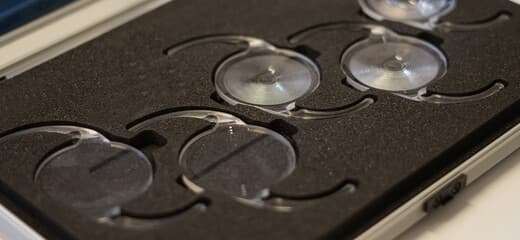Comprehensive Guide to Intraocular Lenses
Intraocular lenses (IOLs) represent a significant advancement in eye care. Eye doctors primarily use in cataract surgery to replace the eye's clouded lens. This detailed guide provides an in-depth look at IOLs. It covers their types and the implantation process, discusses costs in various countries.
Moreover, it also explains how to find treatment, and explores the benefits and potential complications associated with these lenses.
What Is The Intraocular Lenses
Intraocular lenses are artificial lenses surgically implanted in the eye. Eye doctors primarily use them to replace the natural lens of the eye when it becomes clouded. This happens usually due to cataracts. IOLs focus light on the retina, just like a natural, clear lens, thereby restoring vision.
Types of IOLs
- Monofocal Lenses: Provide clear vision at one distance, typically set for far vision.
- Multifocal Lenses: Offer multiple focusing zones for near, mid-level, and far vision.
- Toric Lenses: Designed for people with astigmatism, these lenses correct both the cataract and the astigmatism simultaneously.
The Intraocular Lenses Process
Surgical Procedure
The implantation of an IOL is a standard part of cataract surgery. Doctors typically perform this procedure on an outpatient basis under local anesthesia. They remove the clouded lens through a small incision. Then, they insert the IOL in its place.
Postoperative Care
Recovery from cataract surgery is usually quick. Patients may experience mild discomfort and blurry vision, which improves within a few days. Follow-up appointments are crucial to ensure the IOL is in correct position and to observe the healing process.
Costs and Popular Destinations for Intraocular Lenses
United States
The cost of IOL implantation in the U.S. can vary widely, generally ranging between $3,000 and $5,000. The U.S. is famous for its advanced medical technology and highly skilled ophthalmologists.
United Kingdom
In the UK, the cost for private IOL surgery ranges from £2,000 to £4,000. The National Health Service (NHS) may cover the cost for basic IOLs. But, more advanced lenses might incur additional charges.
India
India is renowned for offering quality eye care at more affordable prices. Their costs for IOL implantation typically range from $1,000 to $2,000. Many international patients choose India for its combination of cost- effectiveness and quality.
Finding Treatment with Wupdoc
Wupdoc is an online resource that simplifies the process of finding specialized eye care for IOL implantation. Its features include:
- Detailed Surgeon Profiles: Information about qualifications, experience, and areas of specialization.
- Patient Reviews and Ratings: Insights from other patients about their experiences.
- Global Reach: Whether looking for treatment at home or abroad, Wupdoc helps find qualified specialists.
- Top Doctor Lists: Facilitates the selection of reputable and experienced surgeons.
Benefits and Risks Intraocular Lenses
Benefits
- Restoration of Vision: IOLs provide clear vision, often eliminating the need for glasses or contact lenses for distance vision.
- Durability: Once implanted, IOLs are a permanent solution, rarely needing replacement.
Risks
- Surgical Complications: Although rare, potential risks include infection, bleeding, and lens dislocation.
- Visual Anomalies: Some patients might experience glare, halos, or difficulty with night vision, particularly with multifocal lenses.
Frequently Asked Questions
Can intraocular lenses be replaced?
Yes, doctors can replace IOLs, if necessary. This might be due to incorrect power selection, dislocation, or other complications.
What are intraocular lenses made of?
Body-friendly materials such as silicone or acrylic are common choices for making IOLs. Manufacturers design these materials for safe and permanent implantation in the eye.
Is intraocular lens dislocation an emergency?
Lens dislocation is relatively rare but can be an emergency. It requires urgent medical attention to prevent potential complications like damage to the eye or vision loss.
Which intraocular lens is best?
The best IOL depends on patient's needs and lifestyle. Factors like age, occupation, and hobbies play a significant role in determining the most suitable IOL type.
About Rayner Intraocular Lenses Limited
Rayner is a leading manufacturer of intraocular lenses, offering a variety of IOL types to meet different visual requirements.
Intraocular lenses offer a life-changing solution for those with cataracts, restoring clear vision and improving quality of life. With advancements in technology, patients have various IOL options to choose from. Each caters to different visual needs.
On the other hand, considering the costs, potential risks, and benefits is crucial in making an informed decision. Platforms like Wupdoc can be helpful in connecting patients with specialized eye care professionals. Tn this way, they ensure access to quality treatment.


















